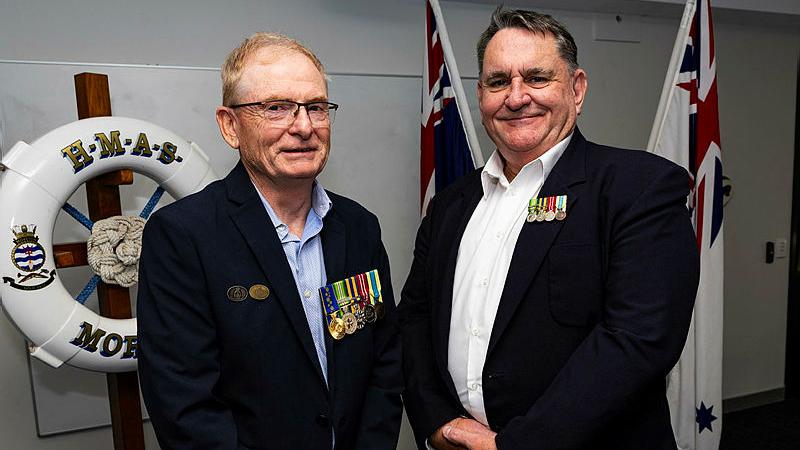- Around one in three Australians diagnosed with epilepsy have tried two or more appropriately chosen antiseizure medications and still haven’t achieved seizure freedom, classifying them as living with drug-resistant epilepsy.1
- Globally, as many as over 80% of 40% of eligible people living with drug-resistant epilepsy are not receiving alternative treatments to anti-seizure medications to help control their seizures. 2
Melbourne, Australia, 19 March, 2024 – A new campaign focused on helping Australians living with drug-resistant epilepsy to better understand available treatment options and access them sooner was launched today.
The campaign, Mind the treatment gap, asks healthcare professionals and people living with drug-resistant epilepsy to prioritise conversations about treatment pathways alternative to anti-seizure medications to achieve seizure control and improve quality of life. It is supported by leading health experts and consumer advocacy groups as they recognise the stark reality of referral and treatment gaps for people with drug-resistant epilepsy.
Drug-resistant epilepsy is defined as failure of at least two appropriately chosen anti-seizure medications anti-seizure medications to achieve sustained seizure freedom.3
Globally, about two-thirds of people with drug-resistant epilepsy are potential candidates for alternative therapies, such as epilepsy surgery, neurostimulation (e.g. vagus nerve stimulation), or dietary therapies.2 However, only 40% of people with drug-resistant epilepsy have undergone comprehensive evaluation, meaning there is around 60% referral gap.2 Among those people with drug-resistant epilepsy who have been evaluated, over 80% of people have not received available alternative treatments such as vagus nerve stimulation or surgery.4 5 The treatment gap is further exacerbated for people living in regional and rural areas.
The Mind the treatment gap campaign aims to bridge this gap by educating healthcare professionals on the importance of early referrals to comprehensive epilepsy centres, explaining alternative treatment options for people with drug-resistant epilepsy and building their confidence in having proactive conversations to reduce the timeline from diagnosis to accessing options to improve seizure control.
Carol Ireland, Chief Executive Officer at Epilepsy Action Australia, said despite epilepsy being one of the most common brain disorders, there needs to be stronger awareness of the importance of early referrals to comprehensive epilepsy centres for people with complex epilepsy to bridge the treatment gap.
“Epilepsy as a condition can be frustrating and isolating, especially if the treatment is not delivering the results needed for a better quality of life. We hope that the newly launched Mind the treatment gap campaign will help raise awareness about the gap in our current approach to treatment of people with drug-resistant epilepsy and foster a deeper understanding of this condition and the management it requires,” said Ms Ireland. Dr Michael Fong, MBBS, FRACP an Epilepsy Neurologist at the Westmead Comprehensive Epilepsy Centre in Sydney, said the use of alternative treatment options and referral rate to dedicated epilepsy centres remain low, so conversations around the existing treatment gap are timely and necessary.
“What we see in practice is that it takes people with drug-resistant epilepsy between 3 to 10 years to get a referral to a comprehensive epilepsy centre, with people in regional and rural areas affected the most. We need to increase understanding among general practitioners, neurologists and their patients that there are proven alternative therapies for them to explore earlier in their treatment plan and achieve desired seizure control and quality of life sooner,” said Dr Fong.
Despite the introduction of many new anti-seizure medications over the past 30 years, including some with novel mechanisms of action, seizure freedom rates have stagnated.6 7 8 9 10 This reinforces the need for increased awareness and use of alternative treatment options for people with drug-resistant epilepsy, including options like epilepsy surgery, vagus nerve stimulation therapy (VNS Therapy™), deep brain stimulation, ketogenic diet, and potential epilepsy precision therapies.11
VNS Therapy™ is an adjunctive neuromodulation therapy widely used to reduce seizure frequency in people with drug-resistant epilepsy who are not suitable for resective surgery.12 13 It works by delivering mild pulses to the vagus nerve at regular intervals throughout the day via a small device implanted under the skin to reduce seizure frequency and improve recovery time.14 In Australia, this therapy is an option for patients with drug-resistant epilepsy alongside other treatment options at comprehensive epilepsy centers. VNS Therapy™ is indicated for use as an adjunctive therapy in reducing the frequency of seizures in patients whose epileptic disorder is dominated by partial seizures (with or without secondary generalisation) or generalized seizures that are refractory to seizure medications.
Professor Piero Perucca, MD, PhD, FRACP, the Director of the Bladin-Berkovic Comprehensive Epilepsy Program at Austin Health and a global leader in research in the diagnosis and management of epilepsy, says early identification and referral of people with drug-resistant epilepsy to comprehensive epilepsy centres allows for effective treatment that may reduce mortality and the potentially irreversible psycho-social consequences of continuing seizures.
“There is an urgent need to address the treatment gap among people with drug-resistant epilepsy as the likelihood of achieving seizure control diminishes with each unsuccessful anti-seizure medication trial. Fortunately for Australians, there are comprehensive epilepsy centres in nearly every state, allowing for people with drug-resistant epilepsy to be referred without delays to optimise their treatment plan,” said Professor Perucca.
Epilepsy experts recommend that Australians with drug-resistant epilepsy should be referred to comprehensive epilepsy centres for diagnostic, re-evaluation and targeted management as soon as possible to optimise their treatment response. These centres are best equipped to evaluate people that are not responding to anti-seizure medications and have better chances at bridging the treatment gap.
To support Mind the treatment gap campaign and access useful resources about drug-resistant epilepsy, visit www.vnstherapy.com.au





